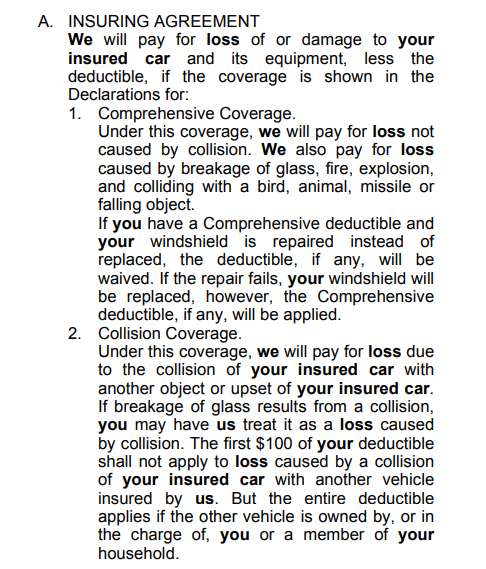Unknown Facts About Pacific Prime
Unknown Facts About Pacific Prime
Blog Article
Getting My Pacific Prime To Work
Table of ContentsThe Greatest Guide To Pacific PrimeAn Unbiased View of Pacific PrimePacific Prime for DummiesFacts About Pacific Prime Revealed
In a lot of states, the insurance company is required to send you a copy of the changes to your policy. It is important that you check out Recommendations or Riders so you understand how your plan has transformed and if the plan is still ample to satisfy your requirements. To obtain a duplicate of your insurance plan, please contact your insurance agent or company.
The Institute of Medicine (IOM) Committee on the Repercussions of Uninsurance launches a prolonged assessment of evidence that addresses the value of medical insurance protection with the magazine of this report. Coverage Matters is the first in a collection of 6 reports that will be issued over the following 2 years documenting the fact and effects of having an approximated 40 million individuals in the USA without wellness insurance policy coverage.

The Best Guide To Pacific Prime
The objective of this collection of studies is to redouble policy focus on a longstanding problem. Adhering to the lengthiest economic growth in American history, in 1999, an estimated one out of every 6 Americans32 million adults under the age of 65 and greater than 10 million childrenremains without insurance (Mills, 2000).

Ten percent of the populace make up 70 percent of healthcare expenditures, a correlation that has actually continued to be constant over the previous 3 years (Berk and Monheit, 2001) - maternity insurance for expats. Hence medical insurance proceeds to serve the feature of spreading out risk also as it progressively funds regular care. From the viewpoint of healthcare carriers, insurance policy lugged by their patients helps secure an income stream, and neighborhoods take advantage of monetarily viable and stable health and wellness treatment professionals and organizations
Federal government supplies medical insurance to populations whom the exclusive market might not offer efficiently, such as disabled and elderly individuals, and populaces whose access to healthcare is socially valued, such as children and expectant females. The ultimate ends of health and wellness insurance policy coverage for the individual and areas, consisting of work environment areas of staff members and employers, are boosted wellness results and high quality of life.
The smart Trick of Pacific Prime That Nobody is Discussing
Employees place medical insurance initially without a doubt in significance among all the benefits used in the work environment (Salisbury, 2001). Although there have actually been substantial financial investments of individual and public funds to give health and wellness insurance, lots of people still have no coverage. Regardless of considerable coverage of study findings and healthcare research study results, the public stays confused and mistaken about Americans without medical insurance and the ramifications of doing not have protection.

Without question, the intricacy of American healthcare funding devices and the riches of sources of info contribute to the general public's complication and skepticism regarding medical insurance stats and their interpretation. This record and those that will comply with purpose to boil down and provide in easily easy to understand terms the comprehensive research study that bears on questions of medical insurance protection and its significance.
Fifty-seven percent of Americans polled in 1999 thought that those without medical insurance are "able to get the care they require from medical professionals and medical facilities" (Blendon et al., 1999, p. 207). In 1993, when national attention was concentrated on the troubles of the without insurance and on pending healthcare regulations, just 43 percent of those questioned held this idea (Blendon et al., 1999).

They also receive less precautionary solutions and are much less likely to have regular look after chronic conditions such as high blood pressure and diabetes mellitus. Persistent conditions can bring about expensive and disabling difficulties if they are not well handled (Lurie et al., 1984; Lurie et al., 1986; Ayanian et al., 2000). One nationwide survey asked even more than 3,400 grownups concerning 15 extremely major or morbid conditions.
A Biased View of Pacific Prime
Added proof exists later on in this phase in the conversation of insurance and accessibility to health treatment. https://www.easel.ly/browserEasel/14457146. People without health and wellness insurance policy are young and healthy and balanced and choose to go without protection. Almost half (43 percent) of those checked in 2000 believed that people without medical insurance are most likely to have health issue than individuals with insurance
Citizens and policy manufacturers in emphasis group discussions define those without insurance policy as young individuals who have the chance to be covered and feel they do not require it (Concierge Novelli, 2001). Contrasted to those with at least some exclusive insurance coverage, the uninsured are less likely to report being in outstanding or excellent health and wellness (Firm for Healthcare Research and High Quality, 2001).
RESOURCE: Center for Expense and Financing Researches, Agency for Medical Care Research and Quality, based on MEPS data. Young adults between 19 and 34 are much more likely to do not have medical insurance than any type of other age team. This is mainly because they are less often eligible for employment-based insurance coverage due to the nature of their task or their brief tenure in it.
The perception that people without insurance have better-than-average health and wellness complies with from puzzling the relatively young age profile of the index without insurance with the much better health and wellness, usually, of more youthful persons. This obscures the web link in between health and wellness status and medical insurance. For those without accessibility to work environment wellness insurance, inadequate health is a possible barrier to purchasing nongroup protection because such insurance coverage may be extremely priced, exclude pre-existing conditions, or be merely not available.
Report this page